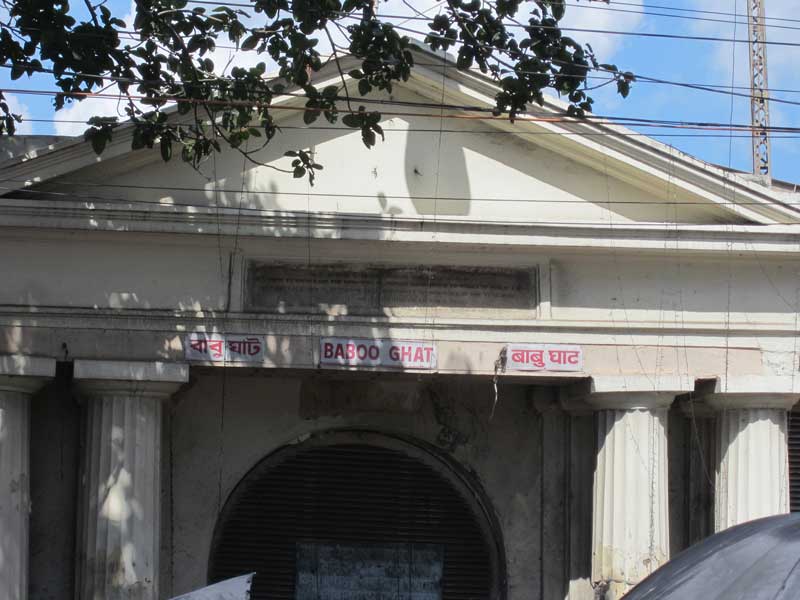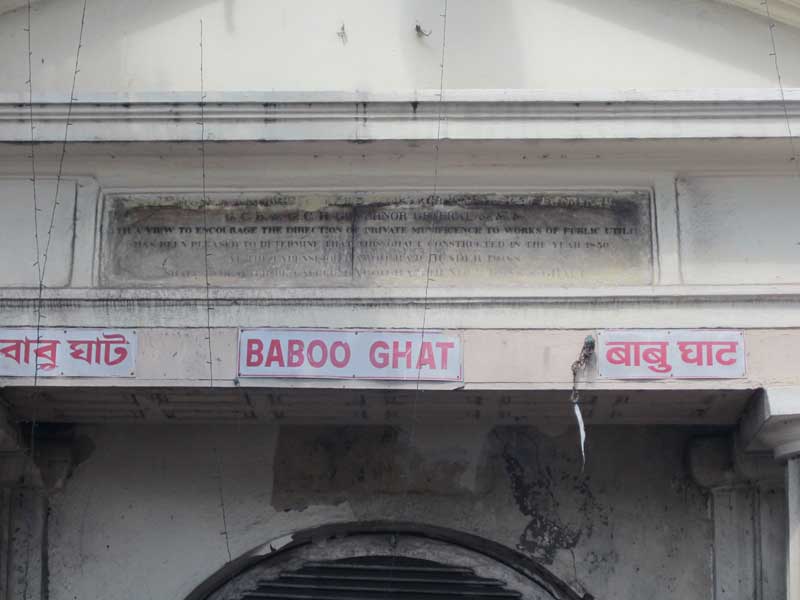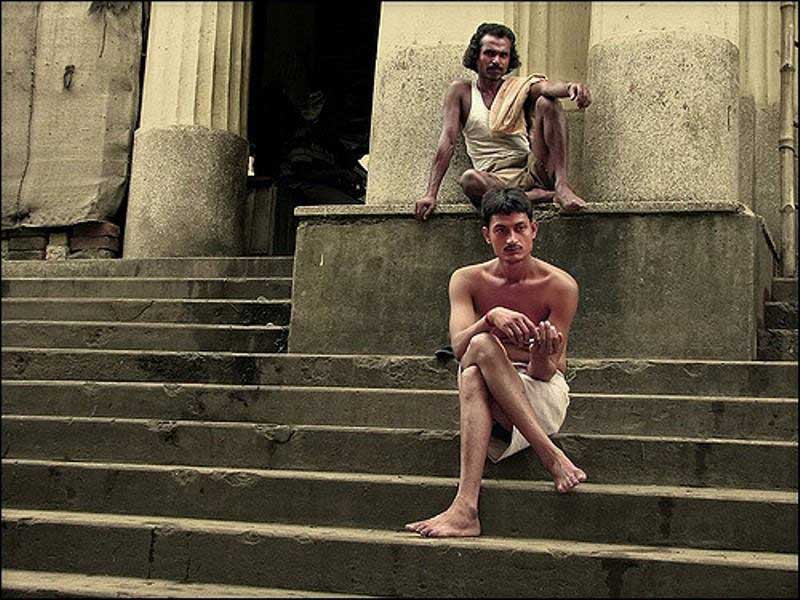
The tall colonial structure of Babu Ghat, which leads to the flight of stairs down the water body, is one of the many of its kind, built during the British Period, along the bank of River Hooghly on Strand Road at Kolkata side. Built by Rani Rashmoni, the then Zaminder of Jan Bazar in 1830, it was dedicated to the memory of her husband Late Babu Raj Chandra Das.
According to Colonel Mark Wood's Map of 1784, Babu Ghat (alias Baje Kadamtala Ghat) was the Southern boundary of Dihi (village) Calcutta, while Dihi Govindpore started from that point and extended as far as the Adi Ganga, known as the Tolly Nullah. Babu Ghat, the second oldest Ghat of Kolkata, was also popularly known as Rani Rashmoni Ghat, in praise of the great spirited lady.

Born on 28 September 1793, Rashmoni, a naive and exceptionally beautiful girl from a suburb of Calcutta, was married to Babu Raj Chandra Das at the tender age of 11. After the death of her husband, she took the charge of the estate and soon proved herself to be a natural leader. She was intelligent enough and gained enough practical experience swiftly and with time, came to be popularly known as Rani Rashmoni for her charity and fight for the cause of the commoners.
She was not scarred of the ruling British and when they imposed tax on fishing in the River Hoogly and thus threatening the livelihood of the poor fishermen, the courageous lady blocked the British shipping trade on a part of the river and compelled them to withdraw the unjust tax imposed earlier on fishing in the river.

Apart from the construction of Babu Ghat, she also funded Ahiritola Ghat and Nimtala Ghat for the daily bathers in the holy river. Around the middle of the 19th century, Rani founded the famous Dakshineswar KaliTemple complex and appointed Sri Ramakrishna Paramhansa (known as Gadadhar during that time) as the head priest. She also donated generously to the then Imperial Library, which later became the National Library of India and Hindu College.

Babu Ghat is a beautiful Doric Greek style pavilion with huge majestic pillars. A marble plaque beneath the pediment indicate that, some of the credit for the erection of the Ghat should go to Lord William Bentinck, as he encouraged such spending with a view to improve public amenities. Another plaque, just above the main entrance of the Ghat, states that the Ghat, constructed in 1830 at the expense of Babu Rajchunder Doss, shall be known hereinafter by his name. Recently the façade of the building was repaired and given a fresh coat of paint.

The pavilion houses several stalls of flowers and sweet. The bathers often purchase the items to offer them to the holy mother Ganga. However, as the place is completely dogged by the unruly pandas, the bathers cum worshippers can hardly get any space to change before and after taking the dip or to take a short rest in the pavilion.
Even, the road in front the pavilion is also crowded by the unauthorised venders. Once there was a Steam Engine, installed very near to the right corner of the Ghat, which used to pump water from the river to clean the city streets. That system ended long back.


Despite everything, the Ghat regularly remains crowded from the dawn till late in the evening with people who use it for bathing, Pujas, religious ceremonies, massage and leisure. There is a bus terminus just outside the Ghat, from where interstate buses are available. Ferry services to cross the river are also available from the jetty connected to the Ghat. Kolkata Metropolitan Development Authority has beautified a stretch of about 2.4 km from Babu Ghat to Prinsep Ghat and named it Millennium Park, which has become a popular meeting place for the public, especially during the sultry evenings of Calcutta summer.

